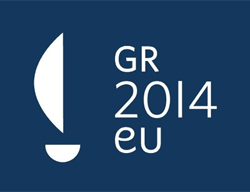PROSPECTS FOR AGRICULTURAL MARKETS AND INCOME IN THE EUROPEAN UNION 2006 – 2013
This publication provides a picture of the likely medium-term developments of agricultural markets, based on a certain number of assumptions and on the statistical information available at the end of November 2006. The report covers the market and income prospects for the period 2006-2013 within the EU for the following products: cereals, oilseeds, sugar, meat, eggs, milk and the main dairy products. The changes in legislation proposed or adopted since November 2006, e.g. on maize intervention, have not been taken into account. Moreover the projections do not take account of the potential outcome of the multilateral trade negotiations within the framework of the Doha Development Round. Therefore, the Uruguay Round Agreement on Agriculture and other existing trade commitments are assumed to remain unchanged and to be met over the period 2006-2013.
The medium-term projections depict an outlook for the EU cereal markets that would appear moderately positive for most EU cereals thanks to the expansion of domestic consumption (growth in emerging bioethanol and biomass demand) and cereal exports. Despite these favourable general conditions, the further delayed integration of land locked EU-12 Member States into the single market owing to marketing inefficiencies and low competitiveness of the livestock industry is identified as a significant downward risk for regional cereal markets. Structural surpluses, particularly of maize, would weigh heavily on the Bulgarian, Hungarian, Romanian and Slovakian markets over the projection period. The sugar markets are characterised by a phase of transition until 2009 during which the reform of the sugar CMO will be implemented. The main medium-term downward risks are the slow take-up of restructuring as well as the high level of stocks both of which could weigh heavily on the sugar industry post 2009.
The poultry and pig meat sector should also exhibit relatively favourable medium-term perspectives, however with a slower growth than in the last decade. Beef production, on the other hand is expected to fall as a consequence of the CAP reform and the declining dairy herd, leading to the widening of the trade deficit. Overall meat consumption is projected to increase from the estimated 85.3 kg/head in 2005 to around 86.8 kg/head by the year 2013. The EU-27 will continue to be a net exporter of pork meat, while increasing competition from low-cost producing countries would lead to the EU becoming a net importer at the end of the forecast period. The market balance for the major dairy products is expected to improve over the medium term, with increasing cheese production and consumption, but lower availabilities of butter and SMP.
The medium-term income projections display a rather favourable outlook as the EU-27 agricultural income would grow by 23.2 % between 2005 and 2013 in real terms and per labour unit (9.3 % in the EU-15, 37.1 % in the EU-10 and 105.1 % in EU-2). Even though the overall outlook for EU agricultural markets and income over the next seven years appears relatively favourable, it clearly remains subject to some important uncertainties. The latter relate in particular to the outcome of the Doha Development Round of trade negotiations and to the risks linked to animal disease such as Avian Influenza, which could have far reaching implications for the future pattern of EU agricultural markets.
![]() Prospects for agricultural markets and income in the European Union 2006 - 2013
Prospects for agricultural markets and income in the European Union 2006 - 2013






 Svejo
Svejo Twitter
Twitter Link4e
Link4e Pipe
Pipe Web-bg
Web-bg Bghot
Bghot Lubimi
Lubimi Novinitednes
Novinitednes Ping
Ping Facebook
Facebook Myspace
Myspace Mix
Mix Del.ico.us
Del.ico.us Reddit
Reddit Digg
Digg Stumbleupon
Stumbleupon Myweb Yahoo
Myweb Yahoo Google Bookmarks
Google Bookmarks Google Buzz
Google Buzz

